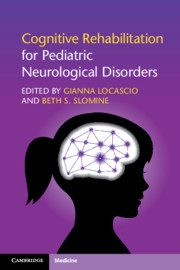Book contents
Section 2 - Special Considerations
Published online by Cambridge University Press: 25 June 2018
- Type
- Chapter
- Information
- Cognitive Rehabilitation for Pediatric Neurological Disorders , pp. 169 - 257Publisher: Cambridge University PressPrint publication year: 2018



